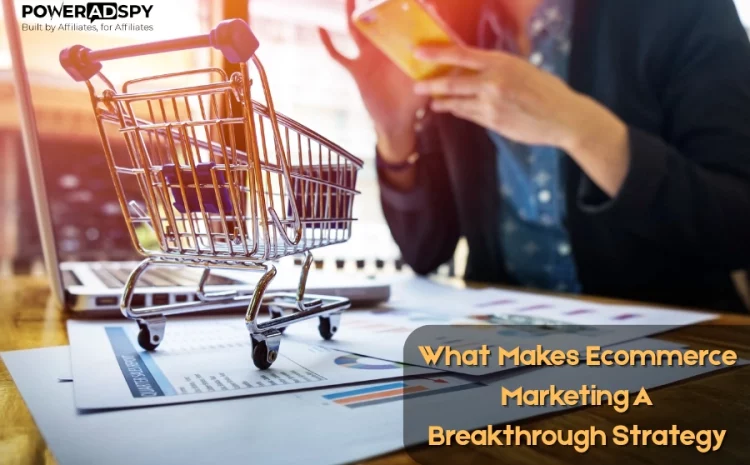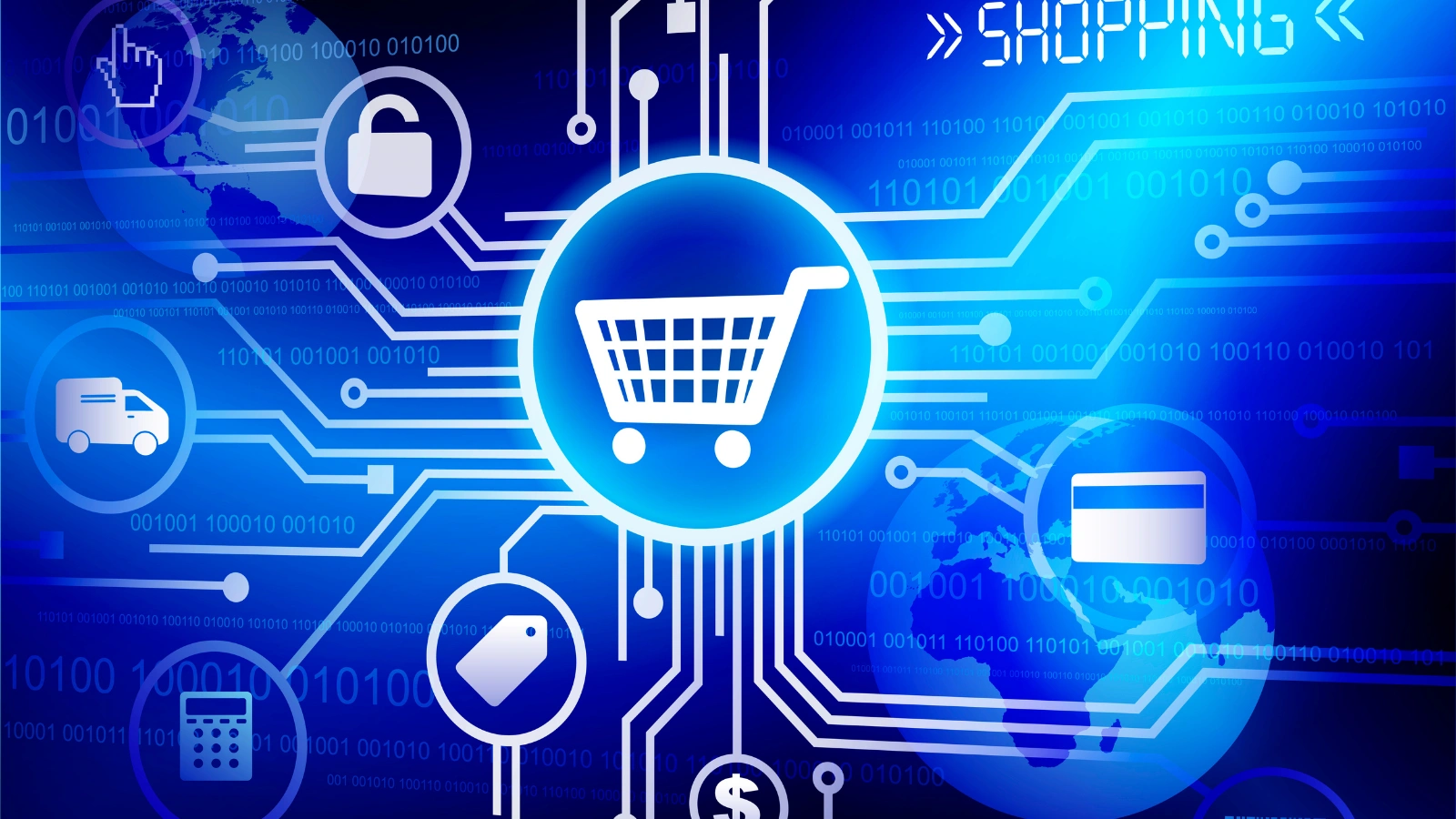What Makes Ecommerce Marketing A Breakthrough Strategy?
In a world where digital platforms dominate retail, ecommerce marketing has emerged as a game-changer for businesses looking to thrive online. It’s not just about setting up an online store; it’s about driving traffic, converting leads, and retaining customers through powerful, strategic marketing efforts.
Whether you’re a small online boutique or a global e-retailer, understanding what is e-commerce marketing, and applying the right techniques is essential for sustainable growth.
Let’s dive into the blog on e-commerce marketing, explore its core pillars, and uncover how to create a winning plan that delivers consistent ROI.
Hit ‘Play’ Button & Tune Into The Blog!
What Is Ecommerce Marketing?
Ecommerce marketing refers to the use of promotional tactics to drive traffic to your online store, convert that traffic into paying customers, and retain those customers post-purchase. It encompasses both online and offline strategies, including SEO, email campaigns, social media, influencer outreach, and paid advertising.
This form of digital marketing enables ecommerce businesses to boost brand awareness, engage target audiences, and increase sales without relying solely on physical foot traffic.
In short, if you’re asking, What is e-commerce marketing?, It’s the lifeblood of your digital business’s success.
Why Ecommerce Marketing Matters In 2025?
With rising competition and ever-evolving consumer behavior, ecommerce marketing has become a cornerstone of modern business success. Here’s why it holds such critical value today:
Global Reach:
Unlike traditional storefronts, ecommerce platforms allow your business to operate 24/7 across multiple countries, expanding your customer base without geographical limitations.
Data-Driven Decisions:
Every action, clicks, conversion, bounce rates can be tracked and analyzed, allowing marketers to refine strategies with precision and maximize ROI.
Customer Insights & Personalization:
Ecommerce tools gather rich user data, enabling tailored product recommendations, dynamic pricing, and personalized messaging that boost engagement and conversions.
Reduced Operational Costs:
Online campaigns cost significantly less than traditional advertising methods like billboards or print, while offering better targeting and scalability.
Real-Time Adaptability:
With access to live performance metrics, businesses can quickly adjust to trends, consumer preferences, and seasonal demand, staying ahead of competitors.
All things considered, e-commerce marketing empowers businesses to grow smarter, faster, and more efficiently in a digital-first world.
What Are The Core Pillars Of Ecommerce Marketing?
To excel in ecommerce marketing, you need a balanced approach combining multiple strategies. Let’s explore the foundational components that make an ecommerce campaign successful.
Search Engine Optimization (SEO):
Search engine optimization is foundational to any successful ecommerce marketing services strategy. It helps your product pages, blog content, and category listings rank higher in search results, driving consistent and targeted organic traffic.
A strong SEO strategy includes thorough keyword research, optimizing meta tags, using descriptive image alt-text, and ensuring fast-loading, mobile-responsive pages. Targeting long-tail keywords such as “best wireless headphones under $50” allows brands to capture highly specific user intent, bringing in visitors who are ready to purchase.
Over time, SEO builds brand visibility, authority, and sustainable traffic without the ongoing costs of paid ads.
Content Marketing:
Content marketing is a powerful way to build trust, drive traffic, and position your brand as an authority in your niche. By producing valuable content such as blog posts, buying guides, product tutorials, and how-to articles, ecommerce businesses can both educate their audiences and support SEO efforts.
For example, a well-written guide on “how to choose the right running shoes” not only informs the reader but also showcases relevant products, boosting conversions. A well-planned ecommerce product marketing strategy always includes optimized content tailored to solve customer problems and answer their questions.
Social Media Marketing:
Social media platforms like Instagram, Facebook, Pinterest, and TikTok are essential tools for visually showcasing products and engaging directly with potential customers. Through targeted ads, influencer collaborations, and interactive features such as stories, reels, and polls, brands can build community and drive conversions.
Social media also acts as a discovery engine; many users stumble upon new products through trending content. In the world of marketing ecommerce, influencer partnerships, especially in lifestyle and fashion niches, have proven highly effective in boosting brand visibility and consumer trust.
Email Marketing:
Email continues to deliver one of the highest returns on investment among all digital marketing channels. It enables businesses to reach customers with personalized messaging, whether it’s a welcome email, a cart abandonment reminder, or a loyalty reward.
Behavior-based automation flows dramatically improve user engagement, ensuring that each message is timely and relevant. Additionally, post-purchase emails can encourage reviews, upsells, and repeat business. For ecommerce brands aiming to build long-term relationships and increase customer lifetime value, email marketing remains a must-have in their toolkit.
Paid Advertising:
Paid advertising plays a crucial role in scaling ecommerce efforts by driving instant, measurable traffic. Platforms like Google Ads, Meta (Facebook and Instagram), YouTube, and TikTok offer advanced targeting capabilities based on user behavior, demographics, and interests.
With the ability to test different creatives, headlines, and calls-to-action, brands can continuously refine their campaigns for better results. Many ecommerce marketers now use an ad spy tool or ad intelligence software to analyze competitors’ ad strategies, identify high-performing creatives, and uncover market gaps. This data-driven approach helps businesses optimize ad spend and stay competitive.
Influencer & Affiliate Marketing:
Influencer and affiliate marketing allow brands to expand their reach through trusted third-party voices. Influencers, especially micro-influencers with highly engaged niche audiences, can create authentic content that drives interest and sales. Similarly, affiliate programs incentivize content creators, bloggers, and partners to promote products in exchange for a commission.
This performance-based model is cost-effective and scalable, making it a smart addition to any e-commerce marketing mix. It’s particularly impactful when aligned with product launches, seasonal sales, or exclusive promotions, helping to amplify exposure and generate urgency.
Together, these strategies form the backbone of a successful ecommerce marketing plan, driving visibility, building trust, and ultimately turning browsers into loyal, repeat customers.
Also Read:
5+ Tips to Create a Powerful SEO Advertising Strategy
How To Grow Your Business With Ecommerce Product Marketing
How To Create An Ecommerce Marketing Strategy That Converts?
To begin, it’s important to understand what ecommerce marketing strategy is; it’s a structured approach that coordinates all promotional efforts to achieve specific business goals, such as increasing traffic, boosting conversions, and growing customer retention. A high-converting ecommerce marketing strategy focuses on delivering value at every stage of the buyer’s journey and optimizing every touchpoint for performance.
Here’s how to craft an effective one:
Step 1: Define Your Target Audience:
Create comprehensive customer profiles by analyzing their demographics, interests, and online behaviors. Understand what they buy, why they buy it, and where they spend time online .Detailed audience insights enable you to tailor your messaging effectively, leading to higher engagement and increased conversions.
Step 2: Set SMART Goals:
Establish Specific, Measurable, Achievable, Relevant, and Time-bound objectives. For example, aim to increase conversions by 20% in the next 60 days.SMART goals ensure your marketing efforts remain targeted, measurable, and aligned with your business objectives.
Step 3: Choose Your Marketing Channel:
Focus on platforms where your audience is most active, like Instagram, Google, or email. Avoid spreading resources too thin across every channel. Prioritizing a few high-impact platforms leads to better engagement and ROI.
Step 4: Create and Repurpose Content:
Develop valuable content that aligns with your goals and brand voice. Repurpose blogs into carousels, videos, or newsletters to expand reach. This saves time while maintaining consistent messaging across channels.
Step 5: Track and Optimize:
Use tools like Google Analytics, Facebook Pixel, and ecommerce dashboards to monitor performance. Continuously test creatives, CTAs, and landing pages for better results. Use ad intelligence software to study your competitors’ campaigns, uncover winning tactics, and refine your marketing strategy for better results.
What Are The Best Practices For Ecommerce Marketing?
Let’s explore tried-and-true practices that elevate your ecommerce presence.
Use Scarcity and Urgency:
Scarcity and urgency tap into psychological triggers that encourage quicker decisions. Countdown timers, flash sales, and low-stock alerts create FOMO (fear of missing out). These ecommerce advertising strategies can greatly enhance conversion rates while minimizing instances of cart abandonment.
Mobile Optimization:
Since more than half of ecommerce traffic comes from mobile devices, having a fast, responsive website is essential for retaining users and driving conversions. Ensure buttons are tappable, content is readable, and the checkout process is seamless. Poor mobile UX can lead to lost sales and frustrated users.
Customer Reviews and Social Proof:
User-generated content like reviews and ratings reinforces trust and credibility. Featuring testimonials on product pages, ads, and landing pages can increase conversions dramatically. Social proof assures buyers that others have had a positive experience.
Upsell and Cross-Sell:
Encouraging customers to buy related or premium products increases the Average Order Value (AOV). Strategically place upsell suggestions on product and checkout pages, or include them in post-purchase emails. This boosts revenue without raising acquisition costs.
A/B Testing:
Instead of relying on guesswork, use A/B testing to experiment with different campaign elements. Test variations in headlines, images, CTAs, colors, or pricing to identify what drives the best results. Continuous testing helps optimize performance and maximize ROI.
Also Read:
Top 10 Ecommerce Advertising Strategies You Can’t Afford To Ignore
How To Use Automation For Ecommerce?
One of the most powerful tools in today’s ecommerce marketing arsenal is automation. It saves time, reduces manual effort, and improves consistency.
Here’s how to use automation for ecommerce effectively:
Email flows: Set up automated welcome series, post-purchase emails, and win-back campaigns.
Chatbots: Offer real-time assistance for customer queries or order updates.
Ad retargeting: Automatically show ads to users who visited your site but didn’t convert.
Inventory alerts: Notify customers when out-of-stock items are back.
Automation, when done right, enhances customer experience and boosts conversions without sacrificing personalization.
Tools That Make Ecommerce Marketing Easier
To run successful ecommerce marketing campaigns, having the right set of tools can make all the difference. From automation and analytics to ad optimization and competitor tracking, smart tools help you save time and increase ROI.
One such tool that stands out in the crowded marketplace is PowerAdSpy.
Why You Should Use PowerAdSpy?
If you’re serious about outperforming your competition in social ads, PowerAdSpy is the ultimate ads spy tool that can transform your campaign strategy. It lets you uncover what your competitors are running, which ads are working across different platforms, and how audiences are engaging with them.
It simplifies the entire research process, from content inspiration and competitor targeting to campaign planning, making it one of the best solutions for marketing ecommerce businesses. PowerAdSpy gives you access to millions of ads globally, real-time performance data, and valuable insights that remove guesswork and help you scale profitably.
Now, let’s break down what makes this tool so powerful.
PowerAdSpy Features: Redefining Social Ad Intelligence
Precision Search Capabilities:
Easily narrow your search using niche keywords, advertiser names, or even Shopify domains. This feature helps ecommerce brands discover exactly what their competitors are running—and what’s working best.
Image and Video Ad Support:
Track both image and video ads to see what visual formats are trending in your niche. You can also download high-performing video creatives for inspiration in your ad campaigns.
Engagement Metrics and Trends:
Access real-time engagement stats like likes, shares, and comments to understand which ads resonate most with audiences, critical for refining your ecommerce creatives.
Shopify Competitor Tracking:
Uncover top-performing Shopify store ads, complete with full engagement insights. This is especially valuable for ecommerce businesses looking to scale based on proven strategies.
GEO-Targeting Data:
Identify exactly where your competitors’ ads are being shown and which regions respond best. Perfect for ecommerce marketers targeting specific markets or testing new locations.
In summary, PowerAdSpy empowers ecommerce brands with the insights they need to create smarter, data-driven campaigns by revealing what’s working, where it’s working, and how to replicate that success with precision.
Conclusion
Ecommerce marketing has revolutionized the way businesses connect, convert, and retain customers in a digital-first economy. With the right mix of SEO, content, email automation, and performance tracking, brands can build lasting relationships and maximize ROI. However, the secret to sustained growth lies in smart tools and informed decision-making.
That’s where PowerAdSpy comes in, your ultimate weapon to decode competitor strategies and find high-performing ad creatives without guesswork. Whether you’re running a Shopify store or managing global campaigns, PowerAdSpy helps you stay ahead with actionable insights.
If you’re ready to elevate your ecommerce game and start marketing smarter, now’s the time to integrate PowerAdSpy into your strategy. Ecommerce success isn’t about working harder; it’s about marketing with precision and intent.
FAQS
1. What budget should a beginner allocate for ecommerce marketing?
Ans. A good starting point is 10–15% of projected revenue. Start with modest budgets for ads and email campaigns, test different approaches, and gradually increase spending based on performance and return on investment.
2. How can I reduce cart abandonment in my ecommerce store?
Ans. Use exit-intent popups, streamline your checkout process, offer guest checkout, and send automated cart recovery emails with limited-time incentives or free shipping.
3. Which KPIs should I track in ecommerce marketing?
Ans. Focus on conversion rate, customer acquisition cost (CAC), average order value (AOV), return on ad spend (ROAS), email open rates, and customer lifetime value (CLTV).












